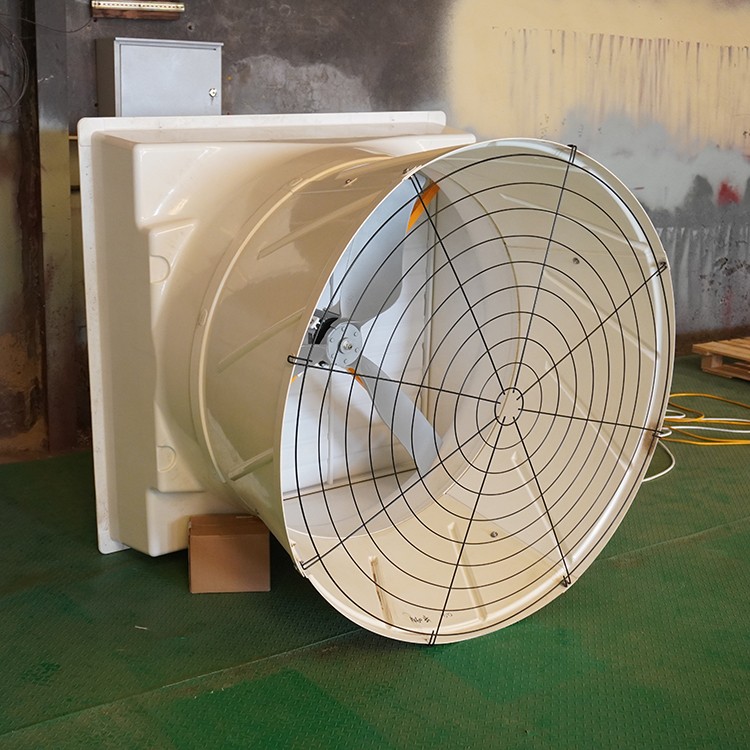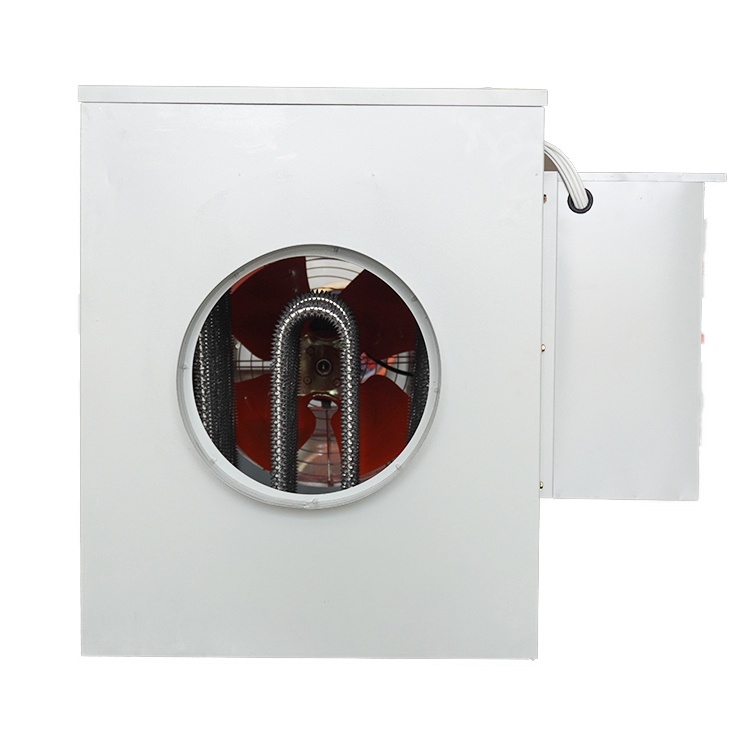Pig farming has come a long way from traditional methods to advanced, technology-driven practices. Among the advancements, Advanced pig house cooling fans have emerged as a crucial component for maintaining optimal conditions and ensuring the well-being of swine. In such settings, fans are indispensable for controlling temperature and air quality. However, not all fans are created equal, and ensuring their longevity and efficiency is vital. In this article, we explore the role of low maintenance and self-cleaning features in advanced pig house cooling fans, and their impact on the well-being of swine and farm operations.

Introducción
Pig farming today is characterized by an emphasis on animal welfare, efficient operations, and cost-effective practices. Maintaining the ideal climate in pig houses is essential for swine health and growth. Cooling fans are an integral part of achieving this, but in the often challenging and demanding environments of pig houses, the question arises: Are these advanced cooling fans designed for low maintenance and easy cleaning, and do they come with self-cleaning features to enhance longevity?
The Significance of Low Maintenance in advanced pig house cooling fans
- The Role of Fans in Pig Houses
Fans are not just an accessory in pig houses; they are the lifeline of the operation. These fans are responsible for ensuring proper air circulation and temperature control, contributing significantly to the well-being of the swine.
- The Need for Low Maintenance
Low maintenance is vital for ensuring the continuous and efficient operation of advanced pig house cooling fans. In the context of pig farming, downtime due to maintenance can be costly and disruptive to the animals.
Challenges of Cleaning and Maintenance
- Environmental Factors
Pig houses are dynamic environments with specific challenges. Dust and debris are common in dry pig houses, while high humidity and moisture can prevail in others. In addition, some processes in pig farming can release corrosive substances, which can affect fan longevity and performance.
- Manual Cleaning Challenges
The manual cleaning of fans can be labor-intensive and time-consuming. This poses a significant challenge for maintaining ideal conditions, especially in large pig houses.
Design for Low Maintenance
- Accessible Components
Advanced pig house cooling fans are designed with accessibility in mind. This means that components prone to dust and debris buildup are easily reachable for cleaning and maintenance.
- Easy-to-Clean Surfaces
The surfaces of these fans are often designed to be easy to clean. Smooth, non-porous materials are used to prevent the buildup of dirt and dust. This not only enhances longevity but also ensures efficient operation.
- Corrosion-Resistant Materials
Some advanced pig house cooling fans are constructed using corrosion-resistant materials. These materials can withstand the effects of corrosive substances, ensuring the durability of the fan.
Self-Cleaning Features
- Blade Design for Self-Cleaning
Some advanced cooling fans are designed with self-cleaning blades. The unique blade design minimizes dust and debris buildup, improving efficiency and reducing the need for manual cleaning.
- Automatic Cleaning Cycles
Certain fans are equipped with automatic cleaning cycles. These cycles can be programmed to remove dust and debris at regular intervals, enhancing fan efficiency and longevity.
Benefits of Low Maintenance and Self-Cleaning
- Reduced Downtime and Operating Costs
Low maintenance and self-cleaning features contribute to reduced downtime. Fans that require less manual cleaning ensure that the pig house can maintain optimal conditions without significant interruptions.
- Enhanced Fan Longevity
Low maintenance practices and self-cleaning features significantly enhance fan longevity. Fans that are free from dust and debris buildup operate efficiently for longer periods.
- Improved Swine Health and Growth
The continuous operation of cooling fans, facilitated by low maintenance and self-cleaning, ensures that swine are kept in ideal conditions, contributing to their health and growth.
mes and benefits of choosing fans designed for low maintenance and self-cleaning are evident. The reduction in downtime and maintenance costs, along with improved swine health and growth, underscore the practical advantages of investing in advanced cooling fans.
Maintenance Practices
- Recommended Maintenance Practices
Maintaining the low-maintenance and self-cleaning features of cooling fans involves adopting specific practices. Regular inspections, cleaning schedules, and preventive maintenance are essential to ensure that fans continue to perform optimally.
- Recomendaciones de proveedores
Los proveedores suelen ofrecer recomendaciones para el mantenimiento de los ventiladores. Seguir estas directrices puede ayudar a maximizar la longevidad de los ventiladores y reducir el riesgo de fallos inesperados.
Garantía y asistencia posventa
- Warranty Terms for Advanced Cooling Fans
Inquiries about the warranty terms for advanced pig house cooling fans are essential. It’s crucial to understand what aspects of maintenance and cleaning are covered by the warranty.
- Addressing Maintenance and Cleaning-Related Issues
Understanding the supplier’s approach to addressing maintenance and cleaning-related issues is crucial for long-term peace of mind. Quick and effective support can minimize disruptions and downtime.
Conclusión
In conclusion, the role of low maintenance and self-cleaning features in advanced pig house cooling fans is indispensable. These features not only enhance fan longevity and reduce operating costs but also contribute to the well-being of swine in pig houses. By understanding the importance of low maintenance and self-cleaning and making informed choices, pig farms can maintain ideal conditions in their operations and ensure the health and growth of their swine.
Productos relacionados






